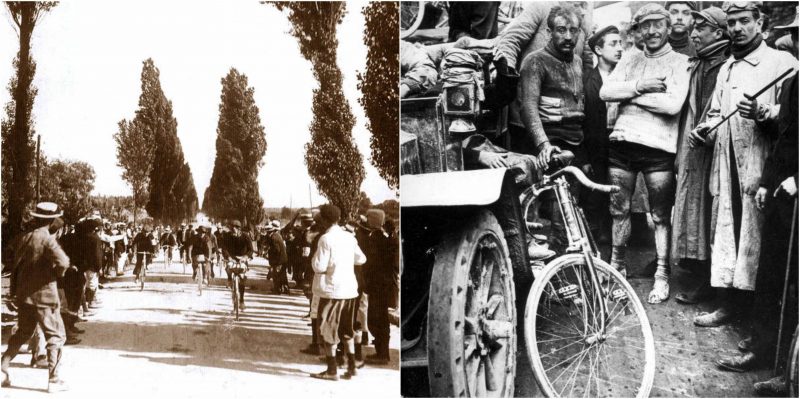In the early 20th century, the country of France was emerging from the devastating effects of the Dreyfus Affair. The country had been deeply divided over the fate of French Artillery Captain Alfred Dreyfus, who had been accused of selling military secrets to the Germans.
The most popular sports newspaper in France at this time was Le Vélo, with over eighty thousand subscribers. Due to the differences of opinion over the guilt or innocence of Captain Dreyfus, a few journalists and businessmen, including Comte Jules-Albert de Dion and Édouard Michelin, courted disgruntled advertisers and started their own newspaper, L’Auto, in 1899. They hired former award-winning cyclist and sports journalist Henri Desgrange as editor.
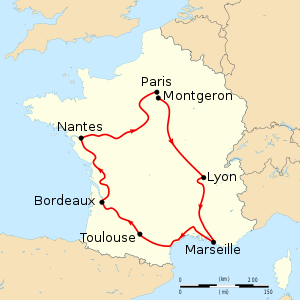
The first issue came out on October 16, 1900, but by 1903 the paper had only reached twenty thousand subscriptions. When Desgrange and his employee Géo Lefèvre, who had just attended the Marseille–Paris cycling race, were in a meeting regarding a way to boost sales, Lefèvre proposed holding a bicycle race around the perimeter of France. Desgrange presented the proposal to financial controller Victor Goddet, who wholeheartedly approved and offered his financial support. On January 19, 1903, the Tour de France was announced in L’Auto.
On July 1, 1903, the first Tour de France began in the village of Montgeron – with stops in Lyon, Marseille, Bordeaux, Nantes, and Toulouse – and ended in Ville d’Avray. It was conducted in six stages, each with an average distance of over 250 miles. The participants had between one and three days to rest between stages. The race was run mostly on flat terrain, with only one noteworthy mountain as the exception. Cyclists paid a fee of ten francs apiece to compete in the entire race, or five francs to participate in just one stage.

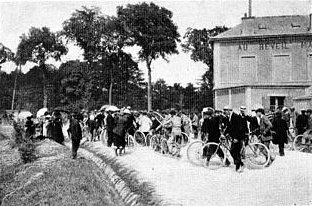
Sixty cyclists, many of whom were professional or semi-professional riders, were on hand for the start of the race. Forty-nine were French, four were Belgian, four were Swiss, two were German, and one was an Italian. Twenty-one were sponsored by bicycle manufacturers, while the rest joined using their own funds.
Unlike in today’s race, a cyclist who was unable to complete a stage was able to start again on the next stage. Racer Hippolyte Aucouturier could not complete the first stage, but returned and won the second and third stages. Another racer, Charles Laeser, the winner of the fourth stage, had not finished the third stage.
Maurice Garin, the early favorite, won the first stage as well as the last two stages, and had an advantage of more than two hours over the next-best entrant. Garin ended up winning the race and collecting the first prize of 12,000 francs – almost six times what the average man was earning then in one year.
For each stage, eight cyclists received a prize of between 50 francs and 1,500 francs, depending on the length and difficulty of the stage. The fourteen fastest cyclists overall in the race were awarded prizes – 3,000 francs for the winner on down to 25 francs for fourteenth place. The last seven competitors to finish received 95 francs, 5 francs for each of the 19 days of the race.
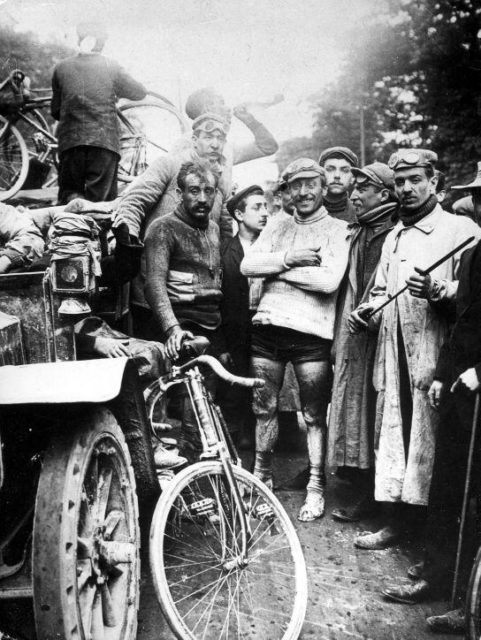
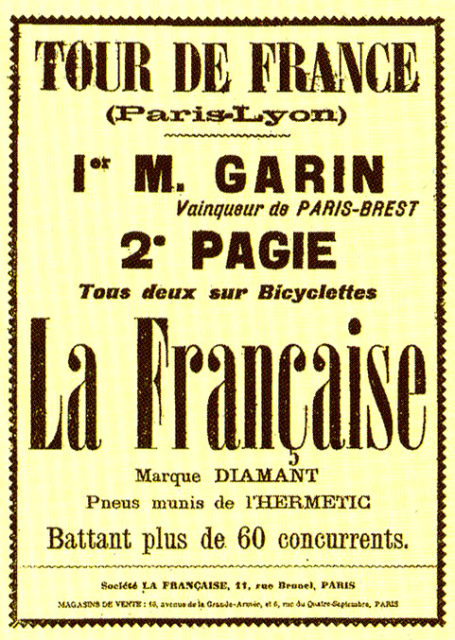
Due to the popularity of the first race in 1903, the circulation of L’Auto rose dramatically, just as the paper’s editor had intended. By 1923, issues of L’Auto had increased to 500,000 copies a day. Except during WWI, when publishing was suspended, the number of issues sold increased every year until 1933, when it reached its top circulation number of over 850,000 during that year’s Tour de France. In the beginning, only reporters from L’Auto were permitted to cover the race. Desgrange felt that other news outlets should not be able to make a profit from “his” race. It wasn’t until the 1920s that other journalists were able to report on the event.
In 1936, after having undergone two prostate operations, Desgrange retired from reporting the race. He died at his home on the Mediterranean coast on August 16, 1940.
Read another story from us: Thomas Stevens: The man who cycled the world on a penny-farthing bicycle
The Tour de France is still held today, of course, after a short break during World War II, but it has been rife with problems. Cheating and drug use have been continual issues; the most notorious was the Lance Armstrong scandal of 2005 when the cyclist was stripped of his seven consecutive wins due to having failed the required drug tests.
Nevertheless, the race celebrated its 100th year in 2003 and continues to be one of the biggest events in Europe.
